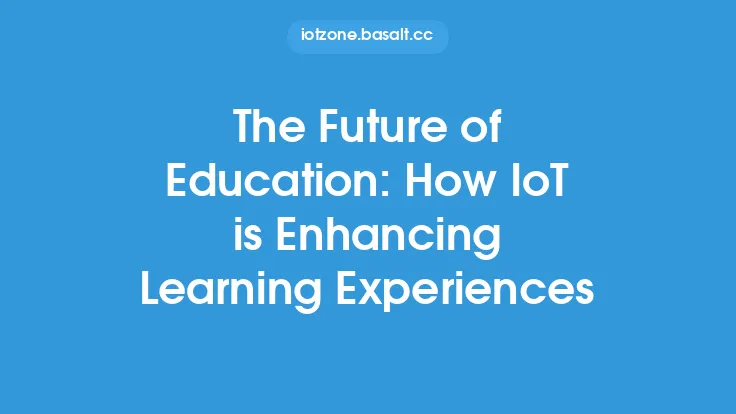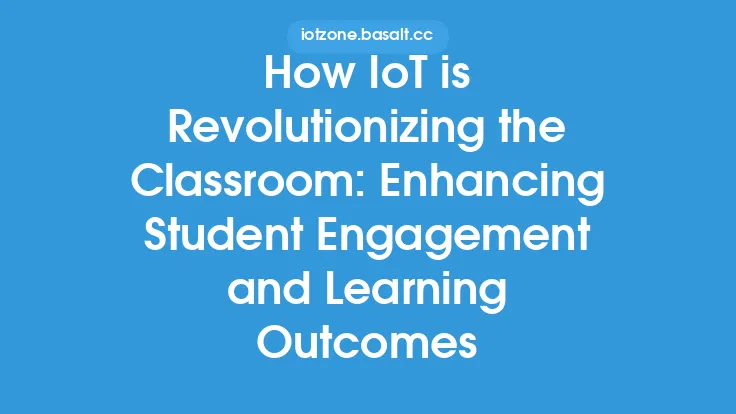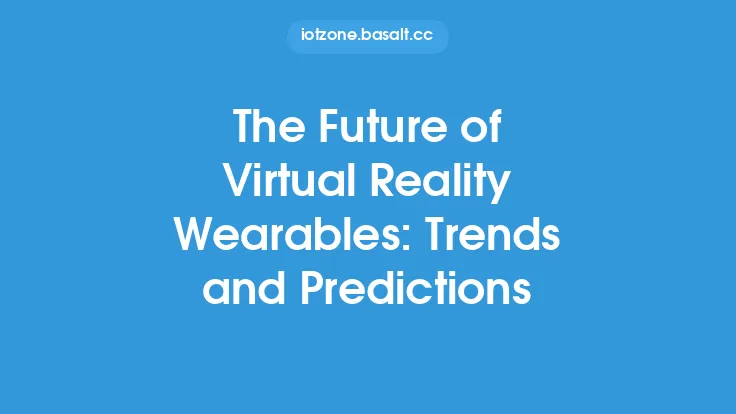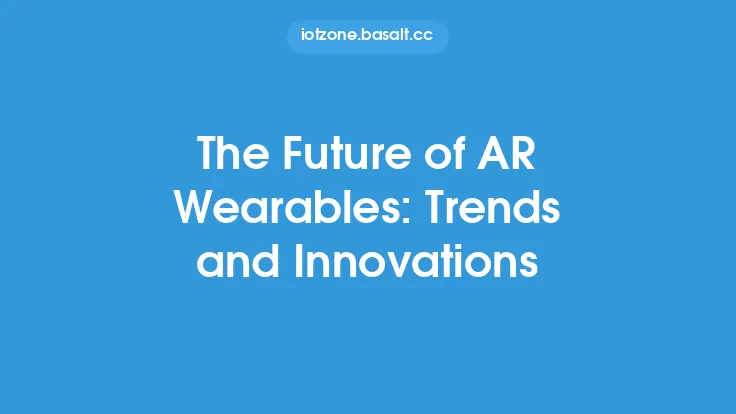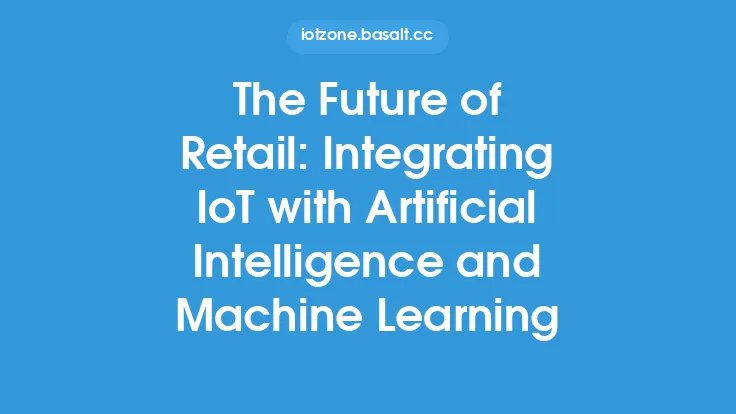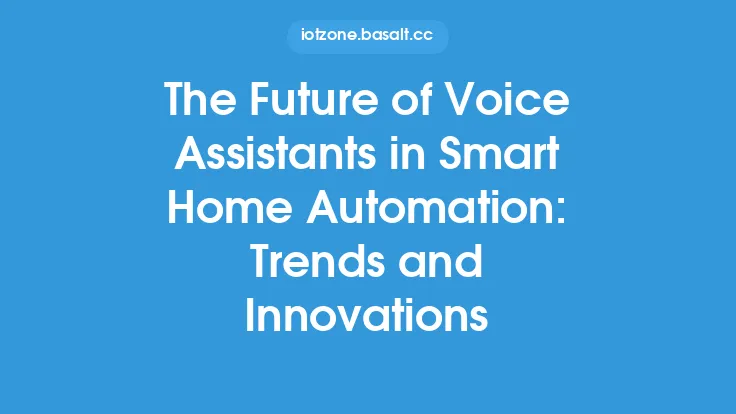The education sector is on the cusp of a revolution, driven by the integration of the Internet of Things (IoT) into learning environments. IoT technology has the potential to transform the way students learn and interact with educational content, making it more immersive, interactive, and effective. By leveraging IoT devices, sensors, and data analytics, educational institutions can create personalized, adaptive, and engaging learning experiences that cater to the diverse needs of students.
Introduction to IoT in Education
IoT in education refers to the use of internet-connected devices, sensors, and systems to enhance teaching, learning, and research. IoT devices can range from simple sensors and actuators to complex systems that integrate multiple technologies, such as artificial intelligence, augmented reality, and data analytics. The IoT ecosystem in education can include a wide range of devices, including wearables, mobile devices, smart boards, and environmental sensors. These devices can collect and transmit data, which can be used to create personalized learning pathways, track student progress, and optimize educational resources.
Key Components of IoT-Enabled Learning Environments
IoT-enabled learning environments typically consist of several key components, including:
- Sensors and Devices: These are the "things" in IoT, which can include temperature sensors, motion detectors, cameras, microphones, and other devices that can collect and transmit data.
- Network Infrastructure: This refers to the underlying network that connects IoT devices, allowing them to communicate with each other and with the cloud or other systems.
- Data Analytics: This involves the use of algorithms and statistical models to analyze data from IoT devices, identifying patterns, trends, and insights that can inform educational decision-making.
- Artificial Intelligence and Machine Learning: These technologies can be used to develop adaptive learning systems that adjust to individual students' needs, abilities, and learning styles.
- User Interfaces: These are the platforms and tools that students and teachers use to interact with IoT-enabled learning environments, such as mobile apps, virtual reality headsets, and smart boards.
Applications of IoT in Education
IoT has a wide range of applications in education, including:
- Personalized Learning: IoT can be used to create personalized learning pathways that adapt to individual students' needs, abilities, and learning styles.
- Interactive Simulations: IoT can enable interactive simulations that allow students to explore complex concepts and systems in a safe, controlled environment.
- Virtual and Augmented Reality: IoT can be used to create immersive virtual and augmented reality experiences that simulate real-world environments and scenarios.
- Real-Time Feedback: IoT can provide real-time feedback to students, helping them to track their progress, identify areas for improvement, and develop a growth mindset.
- Energy Efficiency and Sustainability: IoT can be used to optimize energy consumption and reduce waste in educational institutions, promoting sustainability and reducing costs.
Technical Requirements for IoT-Enabled Learning Environments
To implement IoT-enabled learning environments, educational institutions need to consider several technical requirements, including:
- Network Infrastructure: A robust, secure, and scalable network infrastructure is essential for supporting IoT devices and data analytics.
- Data Storage and Management: Educational institutions need to have a plan for storing, managing, and analyzing the large amounts of data generated by IoT devices.
- Cybersecurity: IoT devices and systems can be vulnerable to cyber threats, so educational institutions need to implement robust security measures to protect student data and prevent unauthorized access.
- Interoperability: IoT devices and systems need to be able to communicate with each other seamlessly, which requires standards-based interoperability protocols.
- Scalability: IoT-enabled learning environments need to be scalable, able to support a large number of devices, users, and applications.
Challenges and Limitations of IoT in Education
While IoT has the potential to transform education, there are several challenges and limitations that need to be addressed, including:
- Cost and Funding: Implementing IoT-enabled learning environments can be expensive, requiring significant investment in infrastructure, devices, and training.
- Digital Divide: IoT can exacerbate existing digital divides, particularly in rural or disadvantaged areas where access to technology and internet connectivity may be limited.
- Data Privacy and Security: IoT devices and systems can generate large amounts of sensitive data, which raises concerns about data privacy and security.
- Teacher Training and Support: Teachers need training and support to effectively integrate IoT into their teaching practices, which can be time-consuming and resource-intensive.
- Equity and Accessibility: IoT-enabled learning environments need to be designed to be accessible and inclusive, ensuring that all students can participate and benefit from these technologies.
Future Directions for IoT in Education
As IoT continues to evolve and improve, we can expect to see new and innovative applications in education, including:
- Artificial Intelligence and Machine Learning: These technologies will play an increasingly important role in IoT-enabled learning environments, enabling adaptive learning systems and personalized feedback.
- Extended Reality: Virtual, augmented, and mixed reality will become more prevalent in education, providing immersive and interactive learning experiences that simulate real-world environments and scenarios.
- Internet of Bodies: The Internet of Bodies (IoB) refers to the integration of IoT devices and systems with the human body, which has significant implications for education, particularly in areas such as health and wellness.
- Quantum Computing: Quantum computing has the potential to revolutionize data analytics and simulation, enabling educators to model complex systems and phenomena in unprecedented detail.
- Human-Centered Design: IoT-enabled learning environments need to be designed with the needs and perspectives of students and teachers in mind, ensuring that these technologies are intuitive, accessible, and effective.
